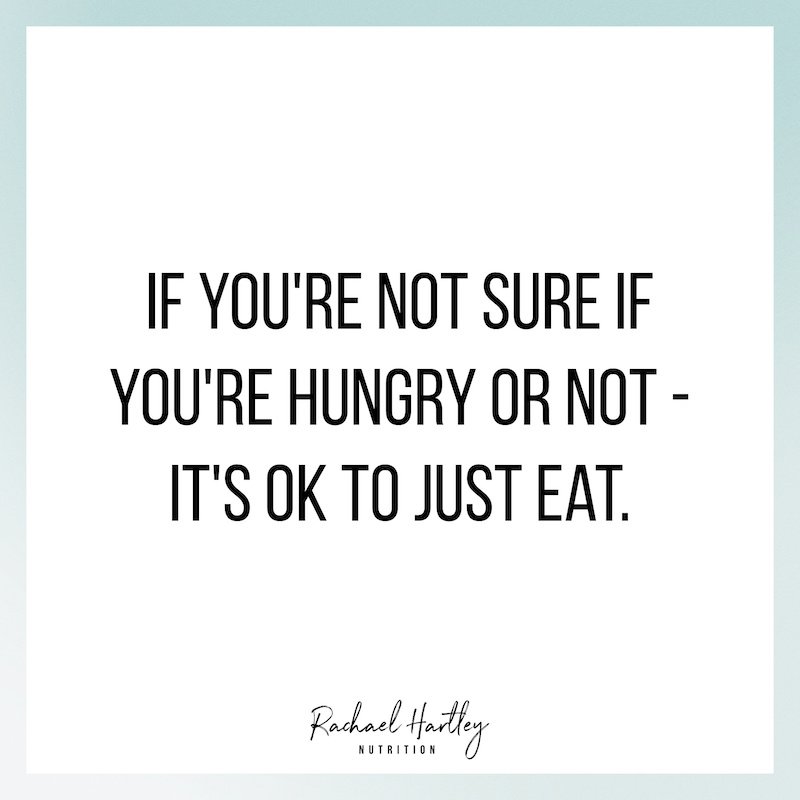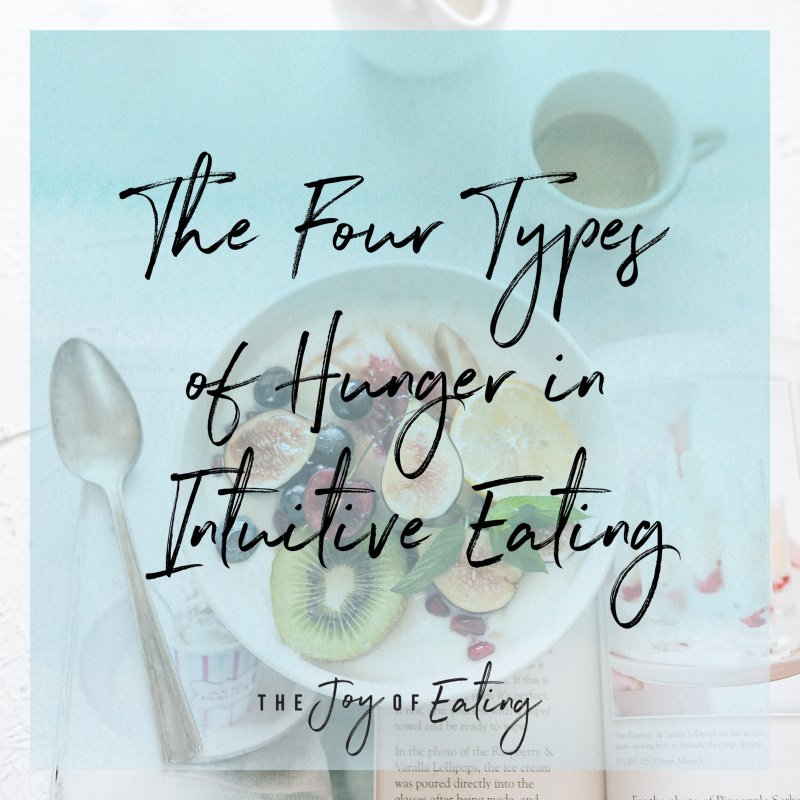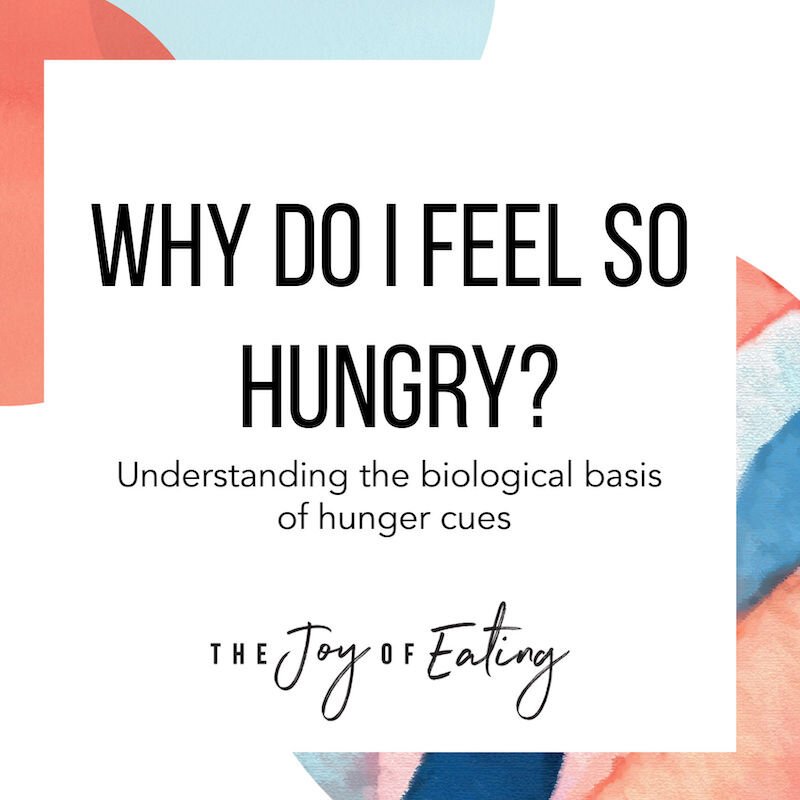Emotional Hunger vs. Physical Hunger: How to Tell The Difference
Understanding the difference between emotional hunger vs. physical hunger in intuitive eating can be difficult, as there’s quite a bit of overlap between the physical and emotional sensations of each. This blog posts teaches you how to tell the difference, and what to do if you’re really not sure.
One of the goals of intuitive eating is learning to recognize physical hunger and fullness cues, and to build skills so you are mostly able to eat in alignment with them. The key word there is mostly, as we are not turning intuitive eating into a hunger/fullness diet here on this blog ☺️ There are plenty of good reasons to eat outside of physical hunger. Plus sometimes we just miss the mark and eat more or less than what our body needs.
That said, part of getting back in touch with hunger and fullness cues is distinguishing between emotional hunger and physical hunger. This can be quite challenging, as there are aspects of each that overlap, and because it is possible to experience intense emotions at the same time as physical hunger - and sometimes because of physical hunger, which I’ll discuss later.
This blog post will discuss emotional hunger vs. physical hunger and how to tell the difference.
What is Physical Hunger?
Physical hunger, sometimes called biological hunger, occurs when your brain is communicating a physical need for food/energy. This motivational state can show up in the body through a range of physical and emotional responses geared at getting you to stop what you’re doing and eat. The only way to address physical hunger is to eat. While there are many diet tricks floating out there aimed at suppressing physical hunger through distractions or temporarily stretching the stomach, these tricks do not address the biological need for food (aka calories). Physical hunger will still be there, lingering in the background, until it rears its head with a much greater intensity.
Physical hunger is often felt through physical sensations. Most people recognize hunger through an emptiness in their stomach, growling, rumbling, or even a gnawing, painful or nauseous feeling when hunger is severe. Physical hunger may also express itself with sensations outside the stomach, like a tightness in the chest or throat. Physical hunger can be felt through fatigue, sleepiness, or difficulty concentrating, and even mood changes like anxiety or anger (aka hanger). Personally, in the morning I rarely experience physical sensations of hunger in the morning, if I go too long without eating I start to get anxious. It’s really common for people to experience physical hunger through emotions like anxiety or a volatile mood.
What is Emotional Hunger?
Emotional hunger is a desire for food that results from an emotion. Most people associate emotional hunger with negative emotions, like stress, sadness, or anger, and certainly emotional hunger often stems from a desire to soothe, numb, or distract from these feelings. However, emotional hunger can also result from positive feelings, like happiness, joy or excitement. Boredom is another feeling that can cause emotional hunger.
Along with physical hunger and emotional hunger, there are two other types of hunger in intuitive eating: taste hunger and practical hunger. You can read about the four types of hunger in intuitive eating here.
Emotional Hunger vs. Physical Hunger: How to Tell The Difference
Understanding emotional hunger vs. physical hunger can be extremely difficult, but here’s a few common characteristics of each:
Characteristics of Physical Hunger:
Physical sensations in the stomach, including emptiness, growling, grumbling, or gnawing.
The physical sensations come on slowly.
The desire for food may be less specific.
The sensations of hunger may feel tied to a desire for satiety and satisfaction.
Physical sensations may be accompanied by fatigue, difficulty concentrating, moodiness, or anxiety, OR you may experience these feelings in lieu of physical sensations.
Generally experienced a 2-3 hours after eating something satisfying, although may occur soon or immediately after eating if you’ve eaten something inadequate, or are undernourished.
Characteristics of Emotional Hunger:
Sensations of hunger are associated with the onset or intensification of strong emotions, including anxiety, stress, anger, sadness, or joy.
May experience physical sensations in the stomach, however these sensations will generally feel more like anxiety.
Hunger comes on rapidly and is immediately intense, often in conjunction with an intense emotion.
The desire/craving for food is often more specific.
The sensations of hunger may feel tied to a desire for soothing, comfort, relaxation or numbing.
Occurs independent of the last time you ate.
Emotional Hunger vs. Physical Hunger: What if You’re Not Sure?
As you can see, there’s a ton of overlap between the experience of physical hunger and emotional hunger. Part of that is because physical sensations can trigger emotions, and emotions can trigger physical sensations. Gotta love that brain-gut connection!
You can also experience physical hunger at the same time as emotional hunger. For example, it could be dinner time at the end of an incredibly stressful day, and you’re experiencing intense cravings for something specific or a desire to numb out with food. Or perhaps you’re bored and hungry, and end up mindlessly grazing on snack foods.
Hunger can also be the direct cause of intense emotions. Think hanger! This is something I see very often with my clients, who think they are an emotional eater, but really just aren’t eating enough. I wrote a whole blog post on how anxiety can be a sign of hunger that you can read here.
Adding to the complexity is the fact that people experience hunger cues differently, and sometimes in ways that conflict with the general characteristics of emotional hunger vs. physical hunger. For example, for me personally, the hungrier I get, the more specific my food cravings get. Or for some people who are getting back in touch with hunger cues, physical hunger may come on very rapidly for them.
So what do you do if you’re not sure if you’re experiencing emotional hunger or physical hunger? Just eat! Seriously, it’s just food. So what if you realize you weren’t actually hungry - you’re allowed to eat when you’re not hungry.
I’d encourage you to put together a satisfying meal or snack, and check in 15ish minutes later to see if you’re feeling any better. If your hunger involves a craving for a specific food, incorporate that into your satisfying meal or snack. Since some common craving foods may not be the most physically satisfying (i.e. candy, chips), it makes sense to eat them alongside something that is satisfying, for example candy paired with some nuts, or chips with guacamole. If the feeling of hunger is lessened, it’s a good clue that it was physical hunger.
If the idea of eating when you might not be physically hungry is scary for you, remember that your body knows what to do with that food. It will be broken down and nutrients and energy will be extracted. Considering it a learning experience in discovering how your unique body experiences emotional hunger vs. physical hunger. Part of learning what different types of hunger feel like for you is making mistakes and learning from them! Plus, if you’ve actually given yourself permission to eat, you might notice that food actually helps soothe whatever emotion you’re experiencing.
Learning to tease apart emotional hunger vs. physical hunger in intuitive eating can take time, patience, and having support can help. We provide intuitive eating coaching throughout the US. Read more about our practice philosophy and services here.







